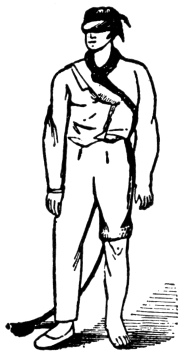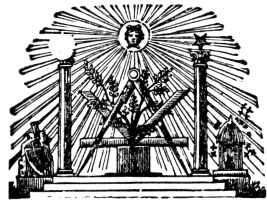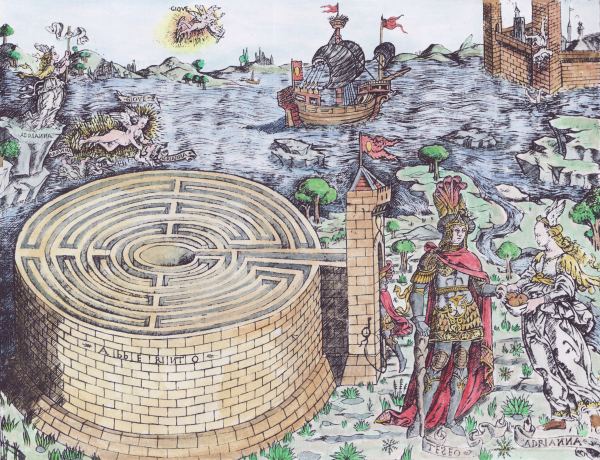p. 41
SUPREME among the wonders of antiquity, unrivaled by the achievements of later architects and builders, the Great Pyramid of Gizeh bears mute witness to an unknown civilization which, having completed its predestined span, passed into oblivion. Eloquent in its silence, inspiring in its majesty, divine in its simplicity, the Great Pyramid is indeed a sermon in stone. Its magnitude overwhelms the puny sensibilities of man. Among the shifting sands of time it stands as a fitting emblem of eternity itself. Who were the illumined mathematicians who planned its parts and dimensions, the master craftsmen who supervised its construction, the skilled artisans who trued its blocks of stone?
The earliest and best-known account of the building of the Great Pyramid is that given by that highly revered but somewhat imaginative historian, Herodotus. “The pyramid was built in steps, battlement-wise, as it is called, or, according to others, altar-wise. After laying the stones for the base, they raised the remaining stones to their places by means of machines formed of short wooden planks. The first machine raised them from the ground to the top of the first step. On this there was another machine, which received the stone upon its arrival, and conveyed it to the second step, whence a third machine advanced it still higher. Either they had as many machines as there were steps in the pyramid, or possibly they had but a single machine, which, being easily moved, was transferred from tier to tier as the stone rose. Both accounts are given, and therefore I mention both. The upper portion of the pyramid was finished first, then the middle, and finally the part which was lowest and nearest the ground. There is an inscription in Egyptian characters on the pyramid which records the quantity of radishes, onions, and garlick consumed by the labourers who constructed it; and I perfectly well remember that the interpreter who read the writing to me said that the money expended in this way was 1600 talents of silver. If this then is a true record, what a vast sum must have been spent on the iron tools used in the work, and on the feeding and clothing of the labourers, considering the length of time the work lasted, which has already been stated [ten years], and the additional time–no small space, I imagine–which must have been occupied by the quarrying of the stones, their conveyance, and the formation of the underground apartments.”
While his account is extremely colorful, it is apparent that the Father of History, for reasons which he doubtless considered sufficient, concocted a fraudulent story to conceal the true origin and purpose of the Great Pyramid. This is but one of several instances in his writings which would lead the thoughtful reader to suspect that Herodotus himself was an initiate of the Sacred Schools and consequently obligated to preserve inviolate the secrets of the ancient orders. The theory advanced by Herodotus and now generally accepted that the Pyramid was the tomb of the Pharaoh Cheops cannot be substantiated. In fact, Manetho, Eratosthenes, and Diodorus Siculus all differ from Herodotus–as well as from each other–regarding the name of the builder of this supreme edifice. The sepulchral vault, which, according to the Lepsius Law of pyramid construction, should have been finished at the same time as the monument or sooner, was never completed. There is no proof that the building was erected by the Egyptians, for the elaborate carvings with which the burial chambers of Egyptian royalty are almost invariably ornamented are entirely lacking and it embodies none of the elements of their architecture or decoration, such as inscriptions, images, cartouches, paintings, and other distinctive features associated with dynastic mortuary art. The only hieroglyphics to be found within the Pyramid are a few builders’ marks sealed up in the chambers of construction, first opened by Howard Vyse. These apparently were painted upon the stones before they were set in position, for in a number of instances the marks were either inverted or disfigured by the operation of fitting the blocks together. While Egyptologists have attempted to identify the crude dabs of paint as cartouches of Cheops, it is almost inconceivable that this ambitious ruler would have permitted his royal name to suffer such indignities. As the most eminent authorities on the subject are still uncertain as to the true meaning of these crude markings, whatever proof they might be that the building was erected during the fourth dynasty is certainly offset by the sea shells at the base of the Pyramid which Mr. Gab advances as evidence that it was erected before the Deluge–a theory substantiated by the much-abused Arabian traditions. One Arabian historian declared that the Pyramid was built by the Egyptian sages as a refuge against the Flood, while another proclaimed it to have been the treasure house of the powerful antediluvian king Sheddad Ben Ad. A panel of hieroglyphs over the entrance, which the casual observer might consider to afford a solution of the mystery, unfortunately dates back no further than A.D. 1843, having been cut at that time by Dr. Lepsius as a tribute to the King of Prussia.

Moe is the founder of GnosticWarrior.com. He is a father, husband, author, martial arts black belt, and an expert in Gnosticism, the occult, and esotericism.








